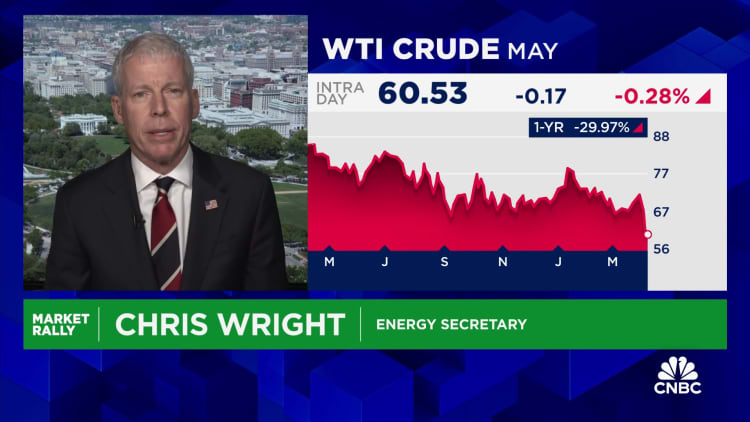
President Donald Trump on Tuesday signed several executive orders that aim to boost domestic coal production, citing the need to meet rising electricity demand from artificial intelligence.
“We will rapidly expedite leases for coal mining on federal lands and we’ll streamline permitting, we will end the government bias against coal and we’re going to unlock the sweeping authorities of the Defense Production Act to turbo charge coal mining in America,” Trump said at a signing ceremony at the White House.
Coal plants are shutting down across the U.S. as they have lost market share to natural gas and have fallen out of favor due to their carbon dioxide emissions.
“If we want to grow America’s electricity production meaningfully over the next five or ten years, we [have] got to stop closing coal plants,” Energy Secretary Chris Wright told CNBC’s “Money Movers” earlier Tuesday.
The Trump administration wants to expand electricity output by 25%, said Wright, who founded Liberty Energy, an oilfield services company, in 2011. “That means we need all the reliable, affordable, secure sources we have and coal is a central one of those,” the energy secretary said.
Coal stocks rose on the president’s order. Peabody Energy gained 9.2%, Core Natural Resources rose about 6.6%, and Ramaco Resources ended the day up 13.9%.
Trump told the World Economic Forum in Davos, Switzerland, in January that he would use emergency powers to expedite the construction of power plants for data centers. The president said plants can use whatever fuel they want, suggesting coal as a backup power source.
A drone view shows coal being prepared for transport, along the Kanawha river outside of Charleston, West Virginia, March 19, 2025.
Evelyn Hockstein | Reuters
It’s unclear whether data centers will turn to coal as a fuel source due to its emissions. Coal emits more carbon dioxide than natural gas, according to the Energy Information Administration, or EIA. The tech sector is playing the lead role in building AI data centers, and has focused on using renewables and, increasingly, nuclear energy to meet its environmental goals.
About 16% of U.S. electricity generation came from burning coal in 2023, down from 51% in 2001, according to EIA data. Natural gas has displaced coal’s market share over the past quarter century, boosted by the shale boom.
Electricity generators in the U.S. are planning to retire about 8 gigawatts of coal-fired capacity in 2025, representing nearly 5% of the coal fleet operating in 2024, according to the EIA. Production of coal in 2023 was less than half of the total in 2008, according to the agency.
The largest grid operator in the U.S., PJM Interconnection, has warned that it will struggle to meet electricity demand due to planned power plant retirements, most of which are coal fired.
Correction: This article has been updated to correct the name of the Energy Information Administration.











